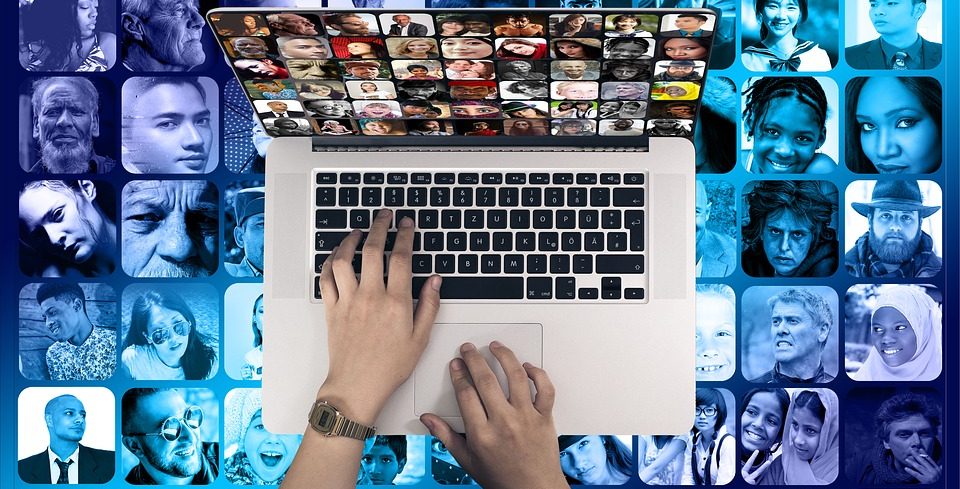I.1 – About this OER
This Open Educational Resource (OER) is designed to challenge your thinking about current and future practices of personalisation in mass higher education. The OER is embedded in the context of digital futures for learning and is licensed under a Creative Common License CC BY-SA.
How to use the interactive features in this eSkript.
 Differences matter, BY Max Pixel, CC0
Differences matter, BY Max Pixel, CC0
I.2 – The challenges of excellence and equity in mass higher education
In the in the 1970s, the scholar Martin Trow predicted that by today, the higher education system in advanced societies will be on the move from elite, to mass and, subsequently to universal access (Trow, 1973).
Trow expected that only elite institutions will be able to provide students with an environment that shapes their mind and character, and guides them towards the fulfilment of their full potential. Non-elite institutions, on the other hand, would mainly emphasise the transmission of skills and prepare students for a variety of elite roles in technical and economic organisations. And yet other institutions, he predicted, might offer universal access to education, ensuring that the whole population is be able to cope with rapid social and technological change (Trow, 1973). In his review, Macfarlane called Trow’s point of view elitist and “a little parochial” (2012, p. 123). However, a resemblance of the underlying tensions between the values of excellence and equity in his set of concepts can be found in many of today’s universities (Macfarlane, 2012).
Trow had indeed foreseen that by today, many universities would be facing a worsening staff-student ratio and an increased diversity of learners. However, he did not expect that the availability of educational data and technologies would prompt higher education institutions to search for new ways of supporting every learner in fulfilling his or her true potential, despite the masses.
I.2.1 – Definition of personalised learning
What does it mean to guide students towards the fulfilment of their full potential? In this OER we will work with the following description of personalised learning of the United States National Education Technology Plan 2017 which acknowledges that learning should be based on the learners’ needs and driven by their interests:
Personalized learning refers to instruction in which the pace of learning and the instructional approach are optimized for the needs of each learner. Learning objectives, instructional approaches, and instructional content (and its sequencing) may all vary based on learner needs. In addition, learning activities are meaningful and relevant to learners, driven by their interests, and often self-initiated. (Department of Education, 2015)
 Seeing the human and the non-human, BY Max Pixel, CC0
Seeing the human and the non-human, BY Max Pixel, CC0
I.3 – Can technology serve personalisation?
In an updated and revised reflection of his concepts, Trow remained sceptical about digital technologies and doubted that they could provide the trustful environment required to nurture each learner’s profile (Trow, 2005):
“Some kinds of education, perhaps the most important kinds, involve the shaping of mind and character, not only the way we think but also the way we feel and see the world. That kind of education, we have learned, requires that people care about one another beyond their usefulness to one another as carriers or recipients of bodies of information and skill. It is uncertain whether that kind of relationship can develop properly through electronic links.” (Trow, 2005, p. 59)
Neil Selwyn named one of the leading issues of today’s personalisation efforts. He criticises that many of these technologically enhanced systems fail to offer “genuinely bespoke education” (Selwyn, 2016, p. 160). Instead, Selwyn argues, they fit students around preconfigured expectations and offer mass customisation by: “varying individuals’ engagement with what is essentially the same service or product, with the aim of achieving the same (or similar) outcomes” (Selwyn, 2016, p. 160).
Was Trow (2005) right with his scepticism about the usefulness of educational technologies in mass higher education? Should universities simply employ more and better teachers, instead of trying to address these challenges with investments in new educational technologies?
It might help to approach this discussion from another viewpoint by adopting a posthumanist perspective in education. Sian Baye (2005) suggested that in digital education, we should follow Andrew Pickering‘s advice and try to see “the human and the nonhuman at once, without trying to strip either away” (Pickering, 2005, p. 31).
Let’s, therefore, venture out and explore some human and non-human assemblages that might have the potential to nurture each learner’s profile in higher education – despite the masses.
Useful resources
- Working paper, Data&Society Research Institute
Bulger, M. (2016) Personalized Learning: The Conversations We ’ re Not Having. New York.
Page 3-4: Introduction to personalised learning.
Page 11-19: Thought-provoking questions and a useful starting point for your critical endeavour - Video: e-Literate TV Series about personalised learning
Case studies on how universities and colleges implement personalised learning across the US.
